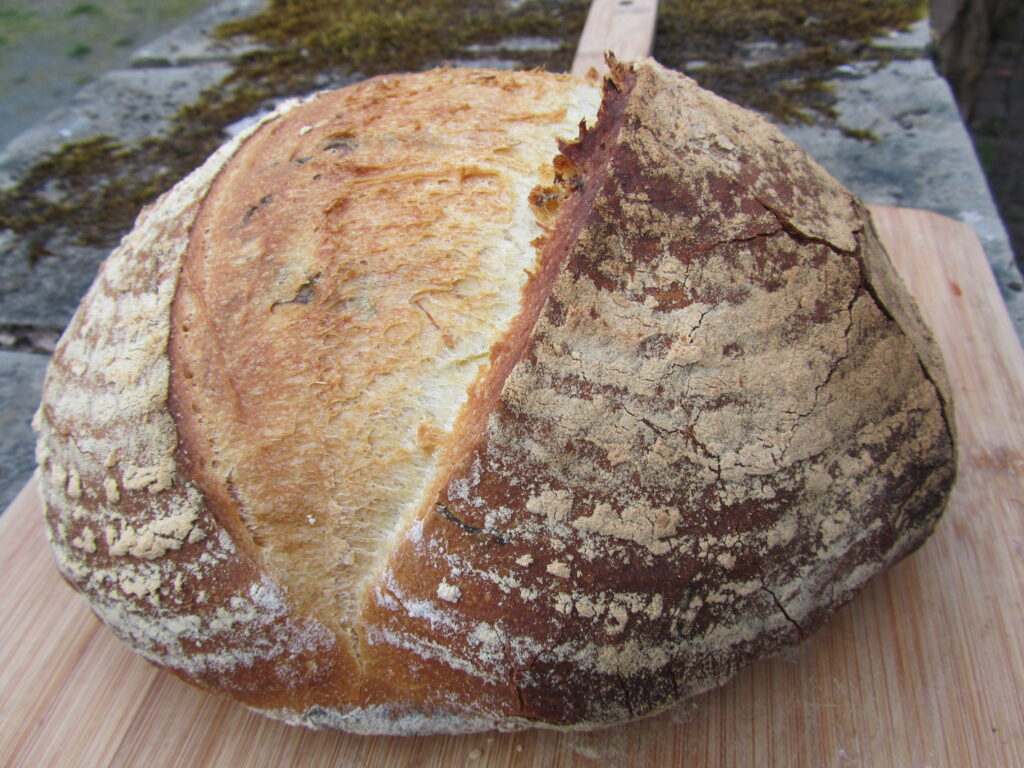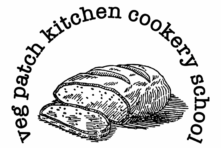



If you are lucky enough to have wild garlic local to you then I urge you to go out and harvest some. It is delicious added to your bread dough like I have done here in this recipe, or made into a garlic butter and used in my wild garlic bread – two ways. Wild garlic or Ramsons as it is otherwise known seems to be quite specialised as to where it will grow. I was bought up about 8 miles away from where I now live but until I moved here I had never seen or heard of wild garlic. Our first spring in Ironbridge revealed it in all of its glory. You will know if it grows nearby as there is no mistaking the smell, particularly around April to June when it starts to decay. Cor blimey! You sometimes need a peg on your nose.
Wild garlic is fairly distinctive, so get yourself a field guide and if you are unsure then the strong garlic smell gives it away. Always follow the rules of foraging. Be sure what you are picking. Ask permission of the landowner. Only pick something that is prolific and not protected. Only take what you need for your personal use. Give it a good wash before eating it.
When I was mixing and handling the uncooked dough, the garlic smell was very strong and I was worried that I had perhaps overdone it a bit. However, once cooked the garlic had mellowed and imparts a subtle and surprisingly sweet hit of garlic. It makes a delicious loaf, that is very good with soup or, in fact, anything that you happen to have for your dinner.
Makes 1 loaf
500g white bread flour
5g easy bake yeast
8-10g sea salt
Approx 320g water
20g olive oil
a couple of handfuls of wild garlic, chopped
Method
Place the flour, yeast and salt in a large bowl (keeping the yeast and salt separate, as the salt will kill the yeast). Add the water and olive oil and mix with a clawed hand until well mixed. Cover with a large bag or clingfilm. Leave to rest for twenty minutes. This allows the flour to absorb the liquid and start to make gluten before you have to get involved. The dough should be softly sticky, if it isn’t add a bit more water. Don’t be tempted to add more flour. A wetter dough is better than a dry dough.
Leave the dough in the bowl and holding the bowl with one hand, stretch some of the dough up and over the rest of the dough. Turn the bowl a quarter turn, and repeat the stretching and folding. Repeat this for about 10-12 folds. Cover the bowl again and leave for another twenty minutes. Repeat the stretching and folding motion again. If the dough starts to resist then stop stretching, if it starts to break then stop stretching. Leave to rest again for another twenty minutes and then fold again. It will need less folding this time and it will feel lovely and stretchy, smooth and satiny. Cover and leave the dough to prove for at least an hour until it has risen, is domed and has plenty of aeration.
Lightly flour your work surface and turn your dough out of the bowl. Add in the chopped garlic leaves and fold the dough over the leaves. Shape into a round and place on a floured tray or into a proving basket or if you prefer into a greased loaf tin. Cover with a large bag or oiled clingfilm and leave to prove again. It might need twenty minutes, it might need an hour. It will depend on the temperature of your dough and the temperature of the room.
Preheat the oven to 220°c and place a baking tray on the oven shelf to heat up with the oven, or use the floor of the roasting oven of the Aga.
To test if your loaf is ready to bake, flour or oil your finger and press lightly onto the surface of the loaf. If it springs back slowly within 2 seconds it is ready to put in the oven.
Place the loaf on the hot baking tray, spray the oven walls with water using a plant mister (avoiding the glass door and light). This will create steam, so that the loaf has a chance to do its last rise before the crust forms. Bake for about 30-40 minutes until the loaf is dark golden and sounds hollow when tapped. Leave to cool completely on a wire tray before slicing and enjoying.
NB. This recipe was first posted on my food blog The Ordinary Cook in 2017.
Ready to learn more?



